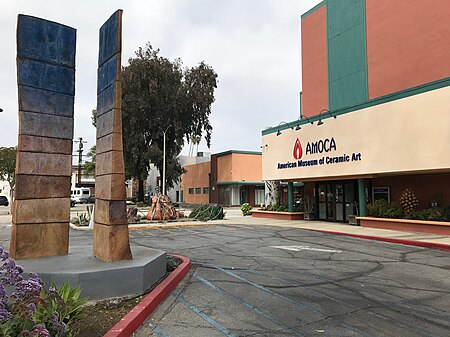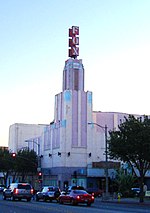American Museum of Ceramic Art
Art museums and galleries in CaliforniaBuildings and structures in Pomona, CaliforniaCeramics museums in the United StatesMuseums in Los Angeles County, California

The American Museum of Ceramic Art (AMOCA) is an art museum for ceramic art, located in Pomona, California. Founded in 2003 as a nonprofit organization, the museum exhibits historic and contemporary ceramic artwork from both its permanent collection of 10,000 objects and through temporary rotating exhibitions.
Excerpt from the Wikipedia article American Museum of Ceramic Art (License: CC BY-SA 3.0, Authors, Images).American Museum of Ceramic Art
North Garey Avenue, Pomona
Geographical coordinates (GPS) Address Nearby Places Show on map
Geographical coordinates (GPS)
| Latitude | Longitude |
|---|---|
| N 34.061 ° | E -117.7506 ° |
Address
American Museum of Ceramic Art / AMOCA
North Garey Avenue 399
91767 Pomona
California, United States
Open on Google Maps






